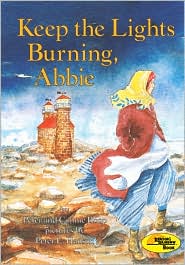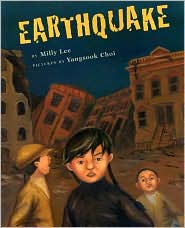I've found that having the right materials makes a huge difference! When I'm teaching narratives, my go-to tool is a simple set of events from the story.
These event cards are so useful! Differentiation is quick, easy, and meaningful, as event cards have so much potential for helping students to zoom in on a story and read closely.
Preparing Event Cards
Event cards are simple to prepare. Just make a single-column table in Word and type the events from the story in order. Use the same number of lines for each cell to keep your final cards the same size. (I find that a 16-point Georgia with three lines per cell work well.) Remember that it's almost impossible to cut a single line cell!Depending on your students, you may want to make your events simple, or more detailed. Be sure to include a sentence to establish the setting and the characters.
When I'm ready to use my cards, I photocopy them on some cardstock and trim the edges at the paper cutter. The kids can do the rest of the cutting! I store cards in envelopes or clear plastic bags in the hopes that I will find them again the next year. (Narrator's voice: She won't.) I never make enough for everyone in the class, because I want students to have to share! Groups of 2-3 are best to make sure that everyone gets to handle the events.
Sequencing
 At the most basic level, the event cards are great for helping students to sequence the events in a story. This week, students read a drama from our literature anthology. Putting events from the drama in order helped students to piece together the action.
At the most basic level, the event cards are great for helping students to sequence the events in a story. This week, students read a drama from our literature anthology. Putting events from the drama in order helped students to piece together the action.Here's where these cards are great for differentiation! It's fascinating to listen in on the conversations that students have. As they argue about which event comes before that one, they often can't resist going back to the text to prove their points.
 Groups finish this task at different times, of course, and so I always put an extension question on the board. In this case, it was: "Read through the event cards with your partner. How is this reading experience different from reading the story in the drama format?"
Groups finish this task at different times, of course, and so I always put an extension question on the board. In this case, it was: "Read through the event cards with your partner. How is this reading experience different from reading the story in the drama format?"Understanding Parts of a Plot
Event cards are also perfect for talking about how a plot unfolds. This is an important standard for sixth grade, and one that requires lots of productive conversation.Using event cards is so much friendlier for students than filling out a plot diagram! A mistake in ordering doesn't mean tedious erasing and rewriting--instead, it's just a simple swap of the cards. Watching my students piece together the events of a story helped me to see how their understanding of plot is developing and how they see the different pieces come together.
Character Changes
If students are having trouble talking about how characters change over the course of a plot, event cards can be helpful tools! Events provide anchors to help students recall the sequence and understand what happens when. Sometimes students who struggle to respond verbally can hold onto an event card and explain how the character changed in response to what occurs. For students with retrieval and executive functioning issues, having manipulatives for reading can be just the scaffold they need for higher order thinking.Have you tried story event cards? What have you noticed with your learners?














